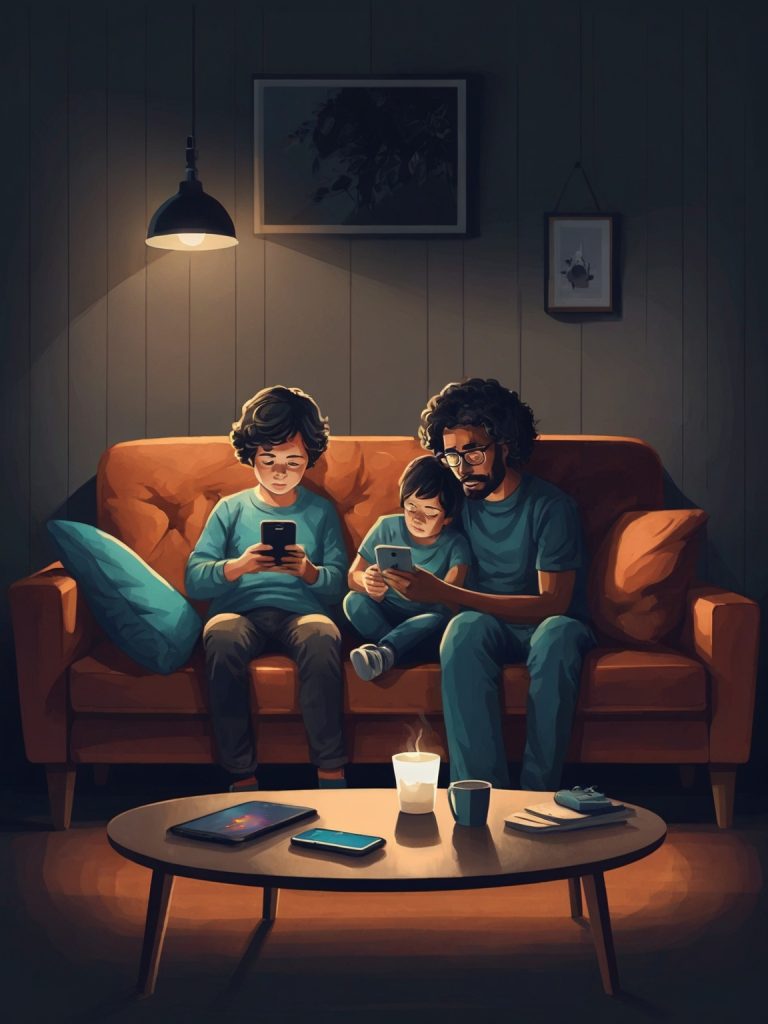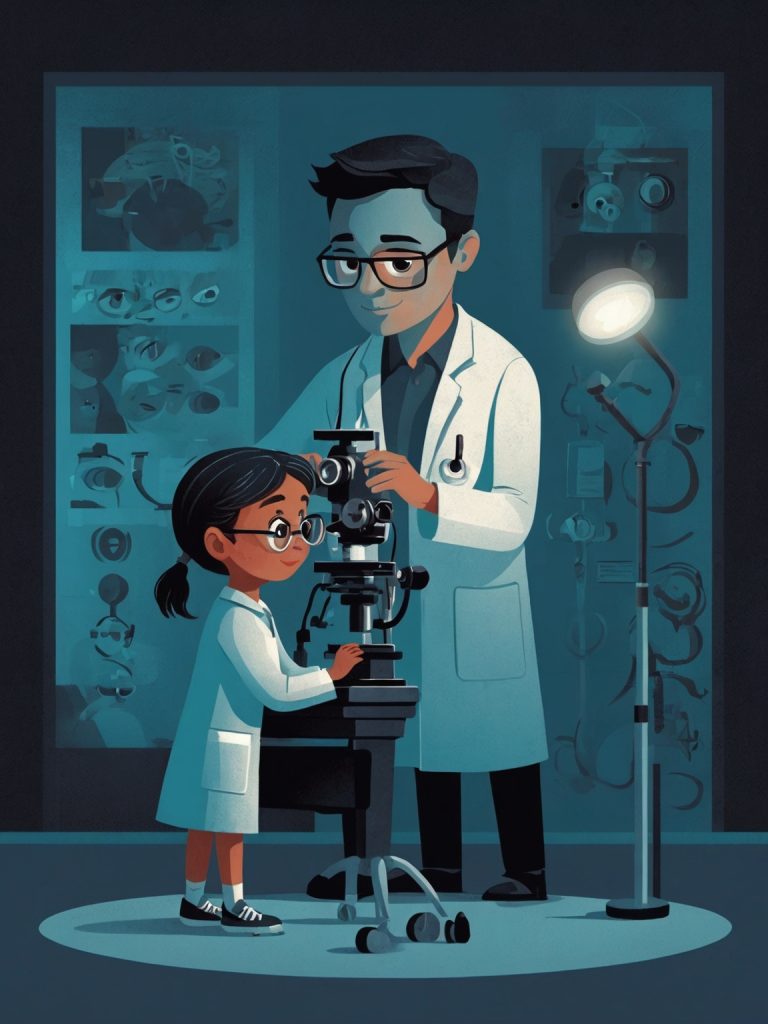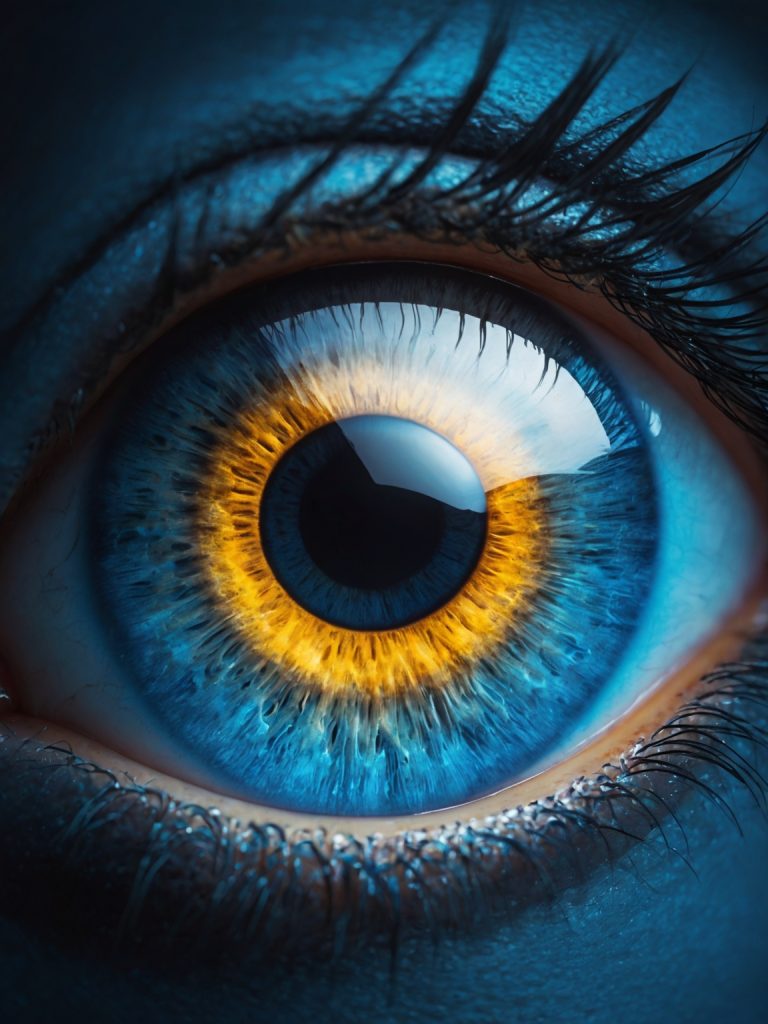This article goes beyond basic advice, offering insights into the science behind myopia and highlighting promising new research on vision therapy.
TL;DR
- Know the culprit: Excessive screen time, lack of sunlight exposure, and intense near work can contribute to myopia.
- Embrace the outdoors: Encourage outdoor play for at least 2 hours daily.
- Manage screen time: Set limits and use the 20-20-20 rule for breaks.
- Schedule regular eye exams: Early detection is key for effective management.
- Research is ongoing: New treatment options like vision therapy are being explored.

Are you concerned about your child’s nearsightedness? You’re not alone. Myopia, or nearsightedness, is becoming increasingly common in children around the world. But don’t worry, there are steps you can take to protect your child’s vision and keep their world bright.
What is Myopia?
Myopia happens when the eyeball grows a bit too long. This means light rays focus in front of the retina instead of directly on it, making distant objects blurry. While genetics can play a role, lifestyle factors are a major contributor to the rise of myopia in children.

The Culprits Behind Blurry Vision:
- Screen Time Overload: From tablets to TVs, our children are surrounded by screens. Spending too much time glued to these devices can strain the eyes and potentially contribute to myopia development. Studies suggest this excessive near work can cause the eyeball to elongate, worsening nearsightedness.
- Not Enough Sun Time: Remember the days spent playing outside? Turns out, soaking up natural light may be good for your child’s eyes too. Studies suggest spending time outdoors, particularly during daylight hours, might help prevent myopia. Exactly how sunlight protects against myopia is still being researched, but some theories suggest it may help regulate dopamine levels in the eye, which can influence eyeball growth.
- Hitting the Books Too Hard? While education is important, intense academic pressure and long periods of near work like reading can contribute to myopia. Children who are focused on close tasks for extended periods may not engage their far vision enough, potentially impacting eyeball development.

Potential Causes of Myopia in Children
| Factor | Description |
|---|---|
| Screen Time Overload | Excessive use of electronic devices like tablets, phones, and TVs can strain the eyes and potentially contribute to myopia development. |
| Not Enough Sun Time | Lack of exposure to natural light, particularly during daylight hours, may be linked to an increased risk of myopia. |
| Intense Near Work | Extended periods of focusing on close objects like reading or studying can potentially impact eyeball development and worsen nearsightedness. |
This table provides a quick overview of the three main lifestyle factors associated with the rise of myopia in children.
Empowering Parents, Protecting Eyesight:
The good news is, there are ways to fight back against myopia! Here’s a toolkit to help your child see their future clearly:
- Knowledge is Power: Educate yourself and your child about the importance of healthy eye habits. This includes limiting screen time, taking breaks from near work, and scheduling regular eye exams. The American Academy of Ophthalmology recommends the 20-20-20 rule: every 20 minutes, look at something 20 feet away for 20 seconds. This can help reduce eye strain and encourage focusing on distant objects.
- The Great Outdoors Beckons: Encourage your child to spend time playing outside. Whether it’s a game of tag in the park or a nature hike, getting that dose of natural light can be a win for their eyes. Aim for at least two hours of outdoor playtime each day, whenever possible.
- Be a Screen Time Superhero: Help your child manage screen time effectively. Set limits on device usage, encourage breaks with the 20-20-20 rule, and consider using blue light filters. Blue light, emitted by electronic devices, can contribute to eye strain. While research on the long-term effects of blue light on children’s eyes is ongoing, limiting exposure is a wise precaution.
- Don’t Skip Eye Exams: Regular eye check-ups are crucial for early detection and management of myopia. Early intervention with corrective lenses or orthokeratology can help slow the progression of nearsightedness. Orthokeratology involves wearing special contact lenses at night that gently reshape the cornea, temporarily improving vision during the day.
- The Future of Eye Health: Research into myopia is ongoing. Scientists are exploring new treatment methods like specialized contact lenses, vision therapy, and even pharmaceutical interventions. Vision therapy involves specific eye exercises designed to improve focusing abilities. While more research is needed, it may be a promising option for some children with myopia.

Simple Strategies to Protect Your Child’s Eyesight
| Habit | Benefit |
|---|---|
| Limit Screen Time | Set clear boundaries on device usage to reduce eye strain. |
| Embrace Outdoor Play | Encourage at least 2 hours of daily playtime outdoors, soaking up natural light. |
| Practice the 20-20-20 Rule | Every 20 minutes, take a 20-second break to look at something 20 feet away, reducing eye strain. |
| Schedule Regular Eye Exams | Early detection and intervention with corrective lenses or orthokeratology can be crucial. |
This table offers practical tips parents can implement to promote healthy eye habits and potentially slow the progression of myopia in their children.
Taking the Next Step:
Myopia doesn’t have to hold your child back from experiencing the world clearly. By working together with educators, healthcare professionals, and your own commitment, we can create a brighter future for children’s vision. Schedule a comprehensive eye exam for your child today and discuss your concerns with your eye doctor. They can provide personalized advice and ensure your child sees the world in all its focus and wonder.
Remember, early detection and intervention are key! By taking proactive steps and working with your eye doctor, you can help your child see their future brightly.
Table 3: Exploring New Frontiers in Myopia Treatment
| Treatment Option | Description |
|---|---|
| Vision Therapy | Specific eye exercises designed to improve focusing abilities. (Promising but requires further research) |
| Specialized Contact Lenses | Lenses that gently reshape the cornea, potentially improving vision. |
| Pharmaceutical Interventions | Medications being explored to potentially regulate factors influencing myopia development. (Early research stage) |
This table delves into some of the exciting new areas of research in myopia treatment, offering a glimpse into potential future solutions.







